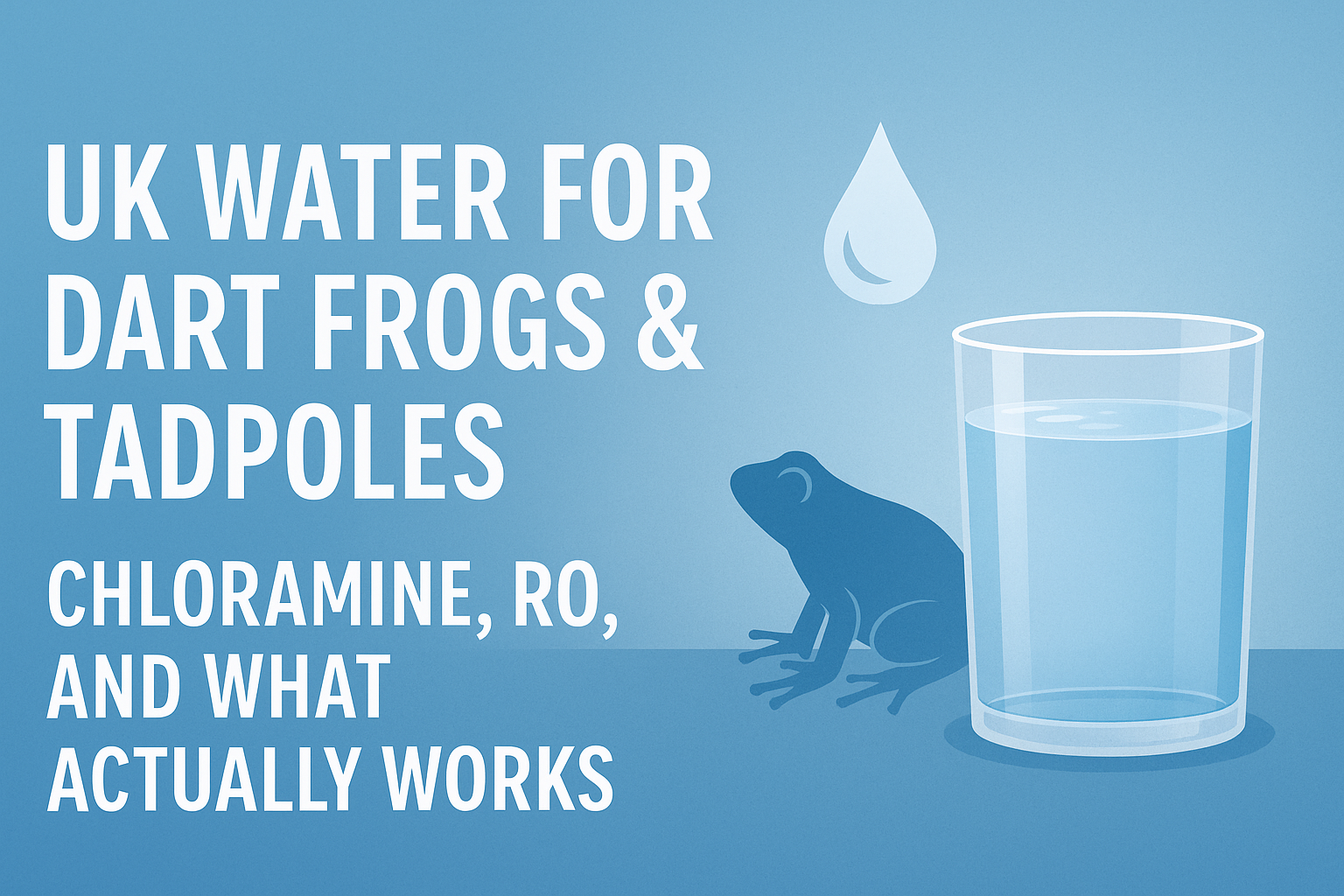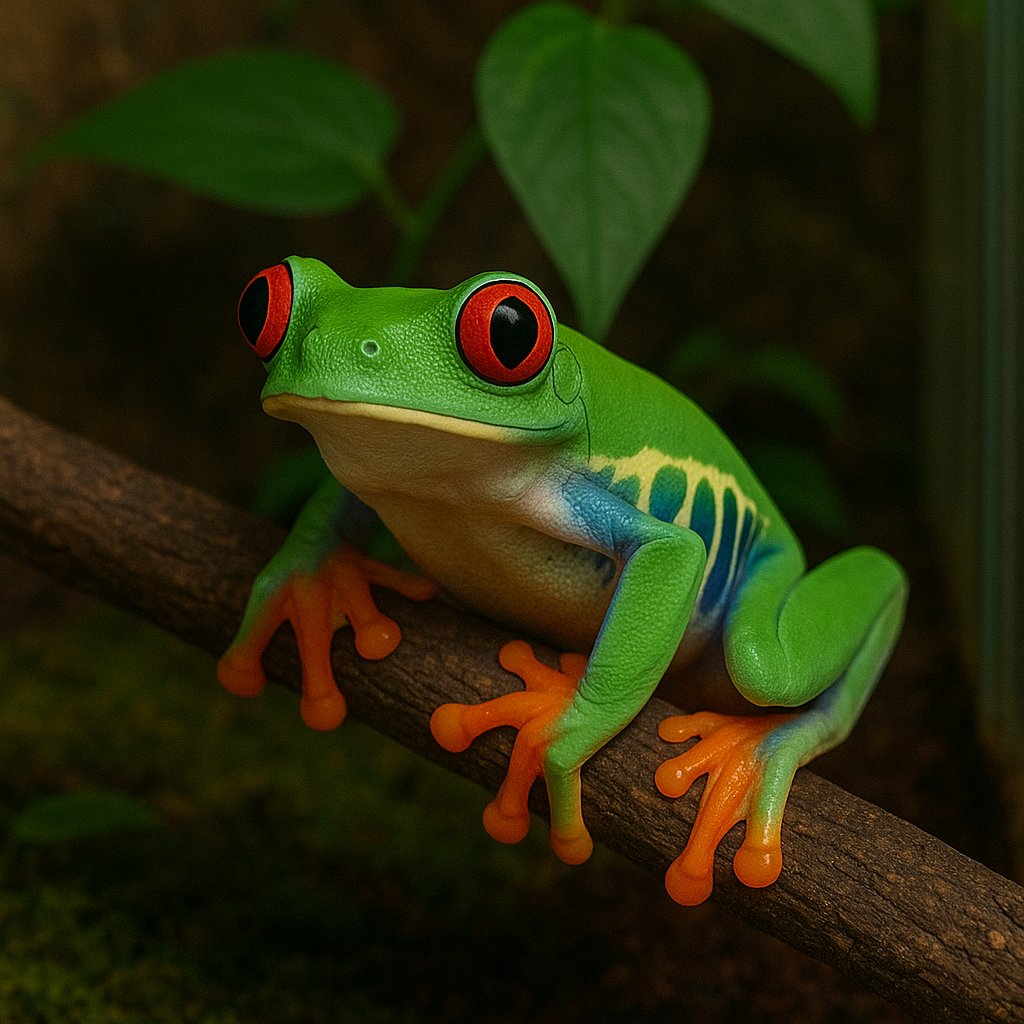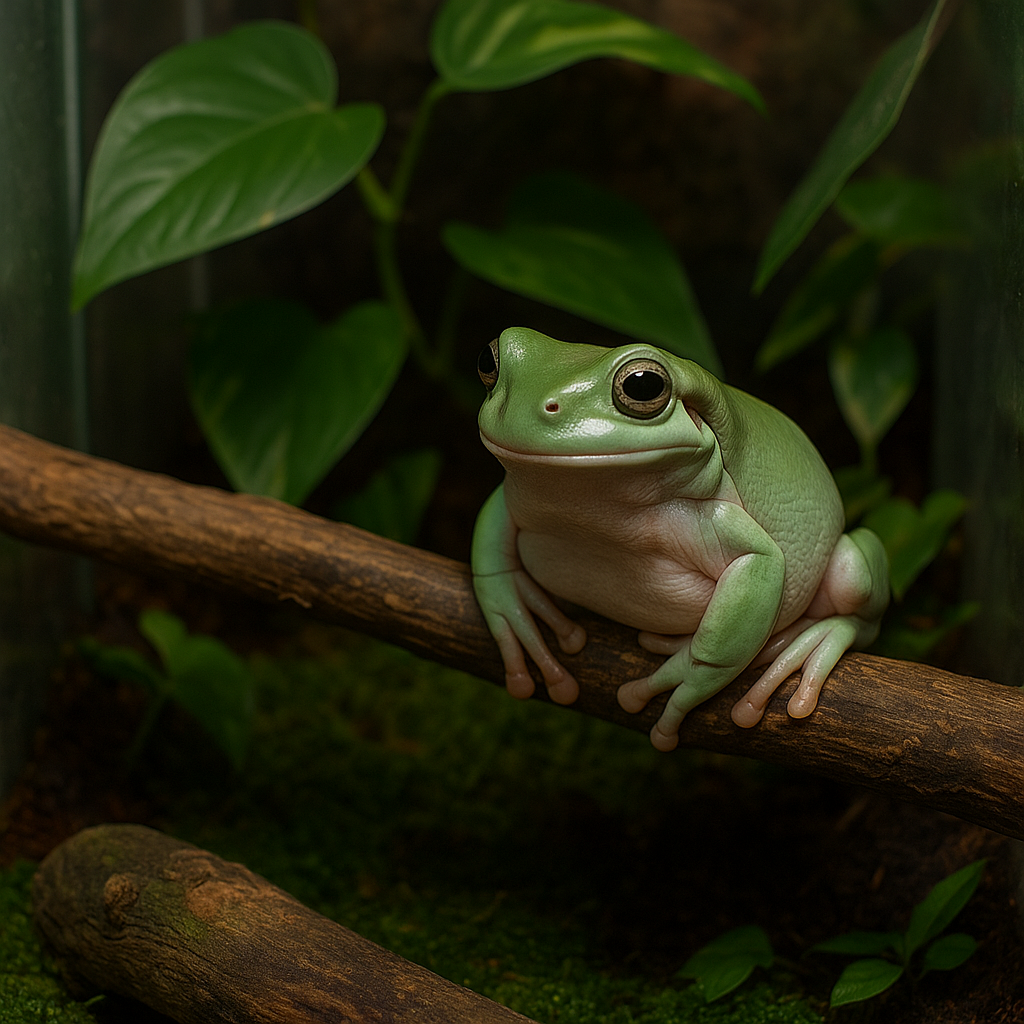UK Water for Dart Frogs & Tadpoles: Chloramine, RO, and What Actually Works
Good water is quiet insurance. In the UK, supplies vary from soft and lightly chlorinated to very hard with chloramine. This guide keeps it practical: how to make water frog-safe, when RO is worth the faff, and what to watch in tadpole tubs.
Chlorine vs chloramine (and why it matters)
Chlorine dissipates; chloramine hangs around and can irritate amphibian skin and delicate gills. Always use a conditioner that specifically states it neutralises chloramine (not just chlorine). If you’re unsure what your supplier uses, treat for chloramine by default. For a tadpole-focused walkthrough, see Raising milk frog tadpoles.
Simple dechlorination routine
- Fill a clean container or jerry can with tap water.
- Add a measured dose of a chloramine-capable conditioner; mix gently.
- Let it sit for a few hours so it reaches room temperature before use.
Keep a “water day” habit: prep once per week, label the container, and you’re done.
When RO/DI makes sense
Consider reverse-osmosis (RO) if your tap water leaves white scale on glass, you see leaf browning on bromeliads, or your KH is so high that pH barely moves. RO is also helpful for very small tadpole containers where stability matters. The principles behind remineralising are covered here: Water Matters: remineralisation in frog care.
A workable compromise is 50–50 RO:tap. You still get trace minerals but cut hardness and scale.
Remineralising for tadpoles
Tadpoles don’t want distilled water. If using full RO, add a tiny pinch of a reputable remineraliser per litre (follow the label). You’re aiming for gentle hardness (a low KH) so pH doesn’t crash, without turning the tub into liquid rock. For chemistry targets and stability tricks, see Water Quality & Chemistry in Bioactive Vivariums.
pH, KH, and stability
- KH (carbonate hardness): Think of it as a pH cushion. Too low and pH can swing; too high and it refuses to budge.
- Targets: Many keepers find moderate softness (low KH) with clean biofilm control works well. Avoid big swings—consistency beats perfection.
Temperature and storage
Store conditioned water at room temperature with a lid. Cold water dumps can shock tadpoles; aim for within 1–2 °C of the tub.
Biofilm, algae, and “mysterious” losses
Skim scum, rinse containers, and avoid overfeeding. A turkey baster is your friend. Small, regular changes (10–20%) beat heroic rescues. If you see persistent cloudiness, step back feeding and increase water turnover slightly.
Quick setups that work
- Display vivaria: Use conditioned tap or 50–50 RO:tap for misting plants and topping up water features. Automating helps; see the Smart Spray Humidifier / misting system for a tidy implementation.
- Two enclosures, one humidifier: Split an output with the HabiStat splitter & nozzle set.
- Tadpole tubs: Conditioned tap or RO with light remineralisation; gentle aeration if the container is larger.
Common pitfalls
- Using a chlorine-only neutraliser when your area uses chloramine.
- Misting bromeliad cups with very hard water and wondering why the edges brown.
- Big, infrequent water changes that yo-yo parameters.
Once your routine is dialled, water stops being a worry and becomes a stable background that lets animals and plants shine.



